-
Car Reviews
- All reviews
- Midsize SUVs
- Small cars
- Utes
- Small SUVs
- Large SUVs
- Large cars
- Sports SUVs
- Sports cars
- Vans
Latest reviews
- Car News
-
Car Comparisons
Latest comparisons
- Chasing Deals
Remarkable, Toyota-rivalling fuel efficiency is just one of the many appealing traits of the new base Hyundai Kona Hybrid
For years Toyota has dominated the hybrid SUV space, achieving fuel economy so unlikely that other car makers could have wondered if they’d somehow figured out a loophole in physics. But now, Toyota has a proper hybrid challenger on its hands in Hyundai.
The i30 Sedan Hybrid we recently tested achieved a remarkable 3.6L/100km in the urban environment, and today we’re in a Kona Hybrid, Hyundai’s small SUV using the same 1.6-litre series-hybrid powertrain. Hyundai claims it can do an incredible 3.9L/100km. And as you’ll read later in this review, we don’t doubt it.
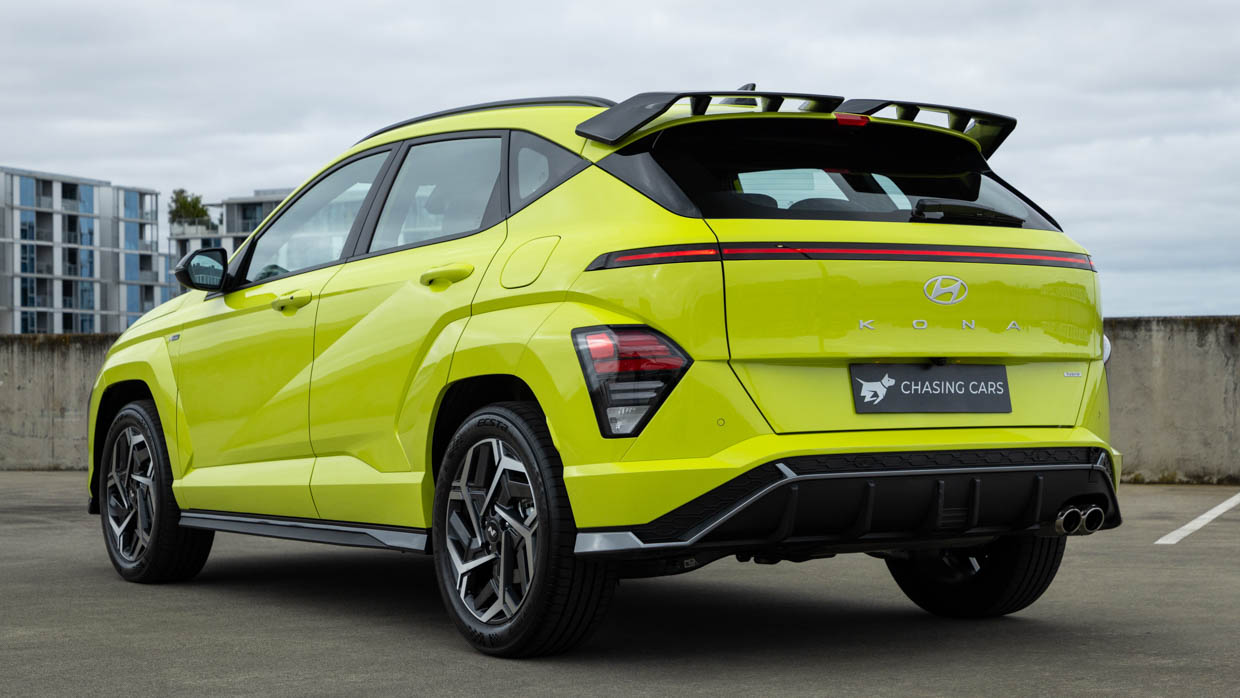
The new-generation Kona, much larger and pricier than its predecessor, intends to take on all manner of other hybrid rivals such as the Toyota Corolla Cross, Honda HR-V and Nissan Qashqai. With this new base Kona Hybrid we’re testing today, Hyundai has cheekily undercut the entry-level hybrid Corolla Cross by $480.
A small SUV, the Kona sits above the Venue city SUV in Hyundai’s SUV line-up. The next sizes up are, in order, Tucson, Santa Fe and Palisade. Made in South Korea, the Kona shares its architecture with the Kia Niro, and there is a dizzying amount of complexity within the one model range here available in Australia.
There’s front drive and all-wheel drive, engines that are naturally aspirated, turbocharged and hybridised, and an all-electric model that does away with combustion all together.
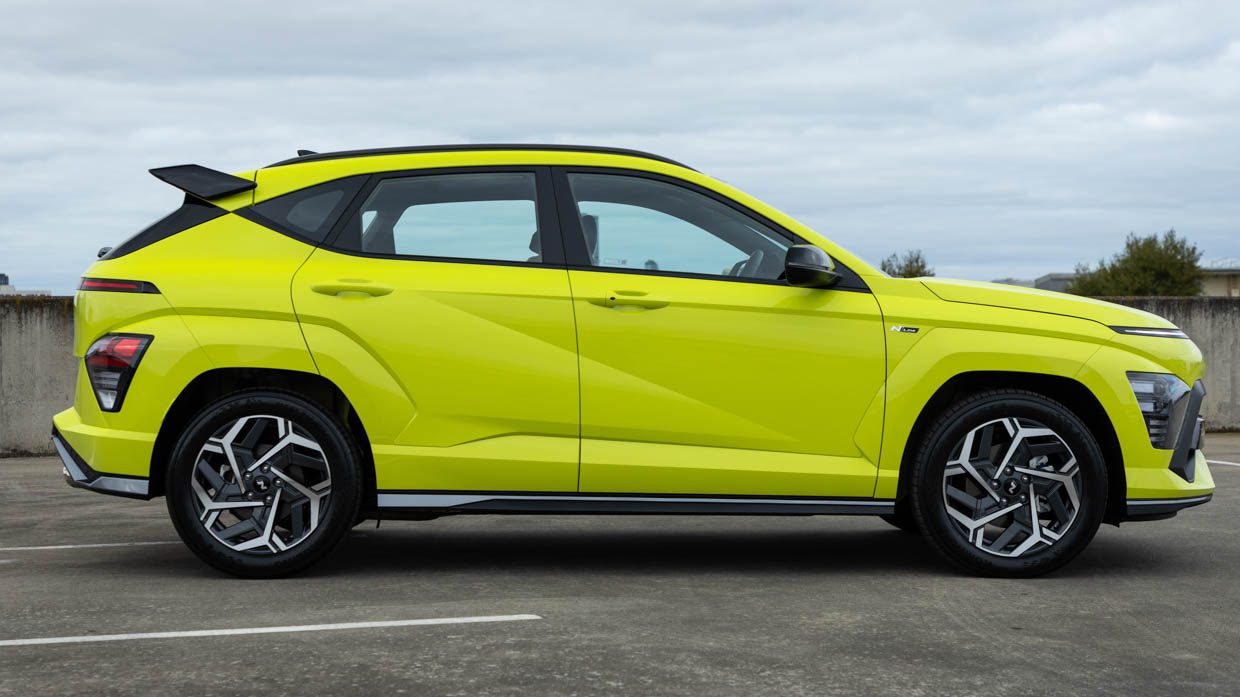
Torque converter, CVT and dual-clutch automatic transmissions are also all available depending on the powertrain. You certainly couldn’t complain about a shortage of choice.
Chasing Cars tested the Kona Hybrid in the dense urban environs of Melbourne and its country surrounds.
There are two grades of Kona available: base and Premium. The hybrid powertrain is available on both. The car we’re testing today is the base.
For $36,000 before on-road costs, here are some standard equipment highlights:
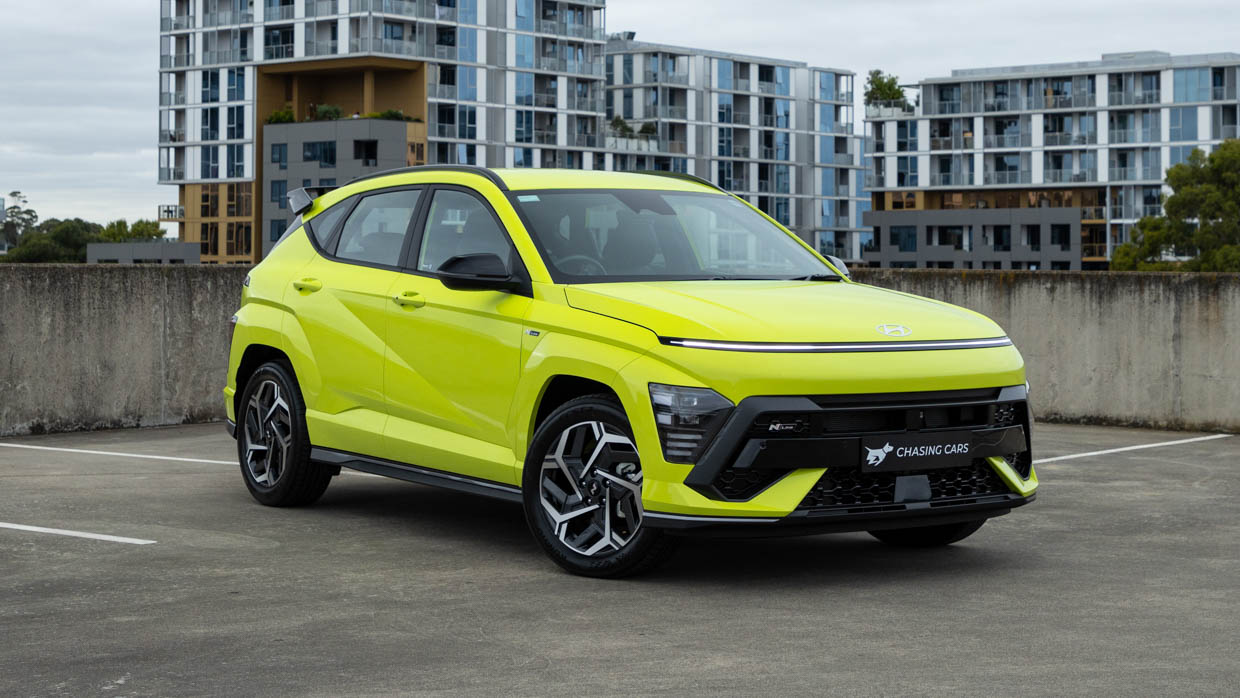
As well as its $595 retina-burning optional premium paint, our test car was fitted with the $4000 optional N Line performance package that adds:
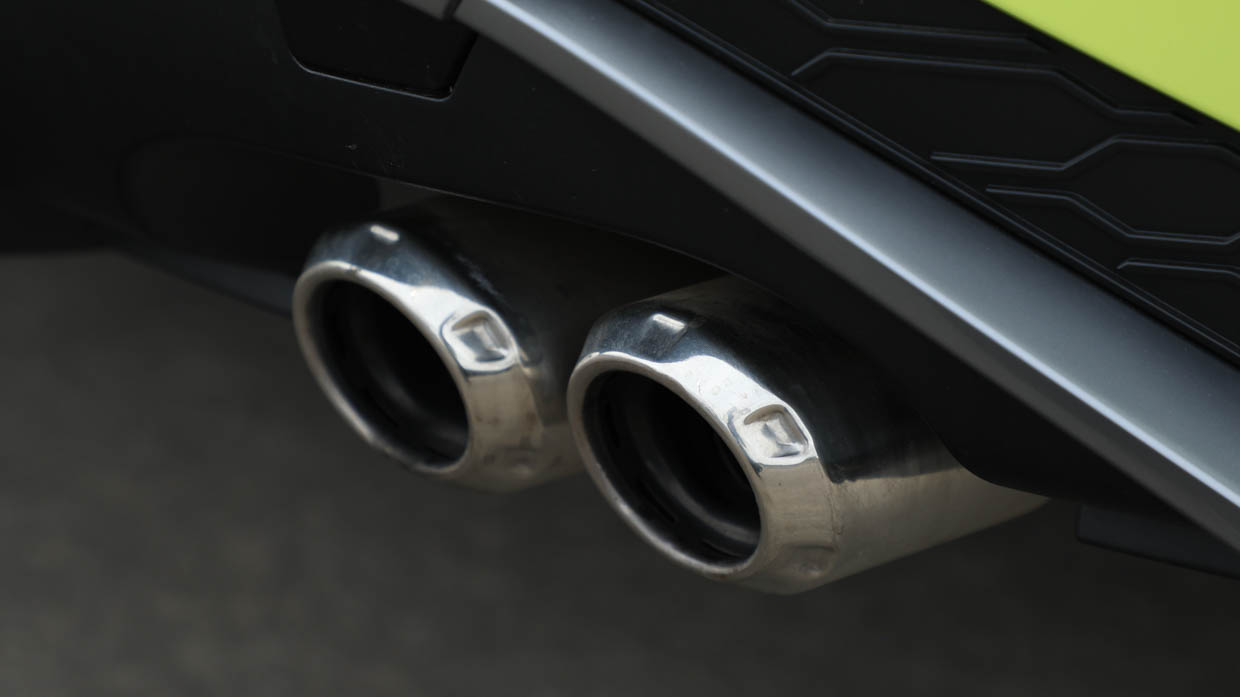
For an additional $7500 you could get the Premium, which adds:
The N Line pack is an extra $3000 on the Premium.
This road tester prefers the Kona without the N Line Package. The fundamental, Tron-like futuristic styling of the new Kona is interesting enough, and once you’ve added wings, N badges and more intense wheels, there’s just a lot going on. That’s especially once you’ve ofdered it in our test car’s Neoteric Yellow, a welding mask is almost required just to look at it.
In the city, the Kona is great to drive. It’s neither too small nor too big for the urban confines. It’s just easy, honest and eager to please.
The hybrid powertrain makes a lot of sense in the normalcy of traffic and the urban jungle. At lower speeds the small 32kW/170Nm electric motor offers a polite yet noticeable level of extra acceleration, enough to get you away from a red light that little bit swifter, or to help change lanes into an opening gap.
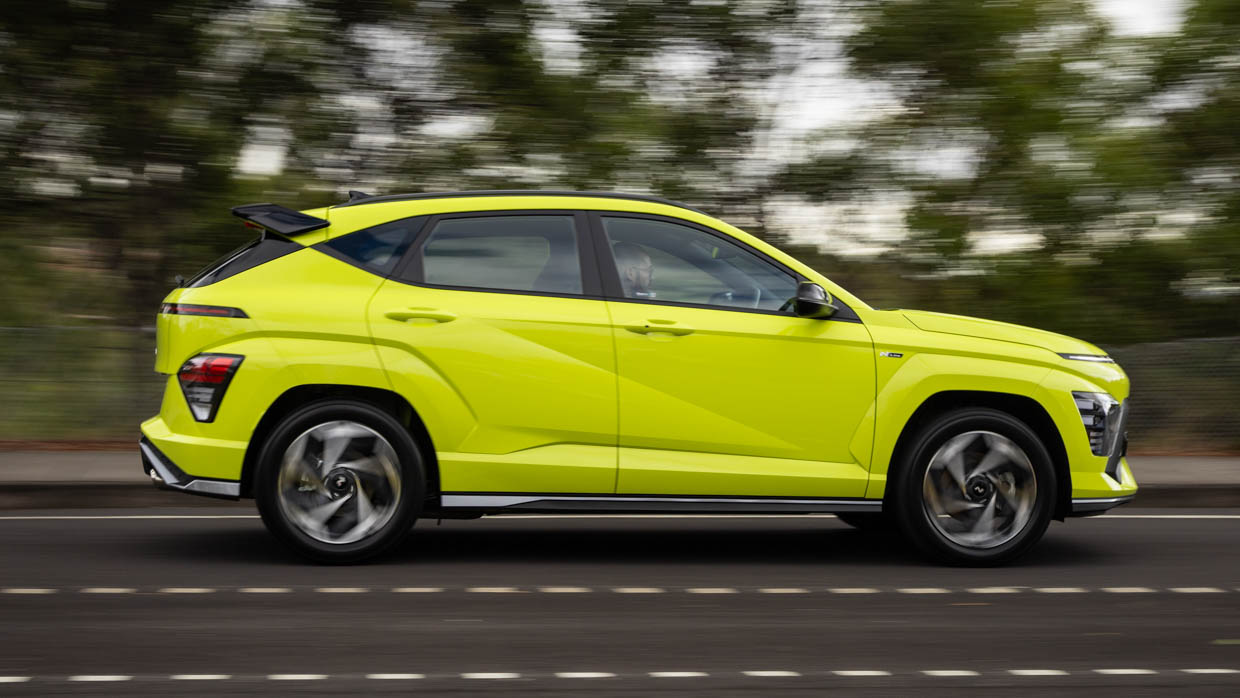
Using the paddles, you can select from four levels of braking regeneration like an electric vehicle, although there’s no fabled ‘one-pedal’ driving mode. While a small, green “EV” symbol in the cluster indicates when the Kona is driving on electric power alone. Unlike Toyota’s hybrids, there’s also no dedicated EV-only mode.
While you don’t really feel the engine kicking in and out, you do hear it. The engine can also be a bit loud and tinny sounding. Refinement levels are better than the 2.0-litre, but still average for the class. At 100km/h there’s quite a bit of tyre noise intrusion, especially on a coarse chip country road.
Another gripe is the turning circle. It’s literally the bare minimum it needs to be, as if the engineers only just met their target. A tighter turning circle would be nice. There’s also quite a large passenger rear blind-spot, meaning you become very grateful for the fitted blind-spot monitors.
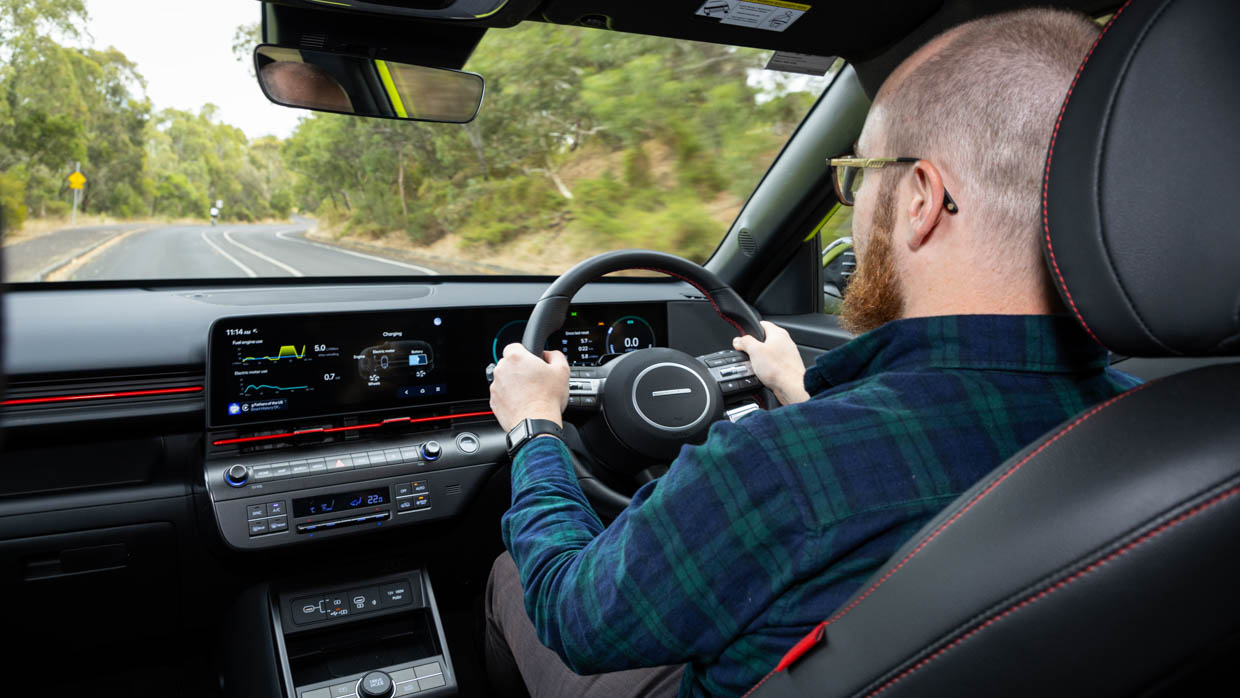
Out on the urban road, the Kona still pleases despite its smaller stature. Even though the hybrid weighs 75kg more than the base 2.0-litre Kona, it’s still only 1410kg, which is pleasingly light by new car standards. And when a car is lighter it tends to ride better, handle better, and is often just nicer to drive. That’s just physics.
Being quite softly sprung, the ride quality is very comfortable. Helping the ride and handling cause further is that unlike the base Kona 2.0-litre with its cheaper Torsion beam rear suspension, the front-drive hybrid gets the more sophisticated independent set-up of the all-wheel-drive model.
The Kona certainly promises a lot by the way it looks. In its tennis ball green paintwork, our test car was very ‘extra’ design-wise, what with its side skirts, big rear wing, polished dual exhaust tips and fat rear diffusor.

Its chequered flag interior scuff plates and racy red dashboard pinstripe all hint at some performance potential, but when it comes to sporty driving we’re afraid this hybrid has more bark than bite.
While the Kona Hybrid is fun to drive with great-feeling controls such as the steering and brake, ultimately based on how it looks, it feels like someone forgot to fit the turbo engine.
Find yourself on a winding road and there are three driving modes at your disposal – sport, eco and snow. Eco is the de facto ‘normal’ mode (which makes sense in a way for a hybrid).
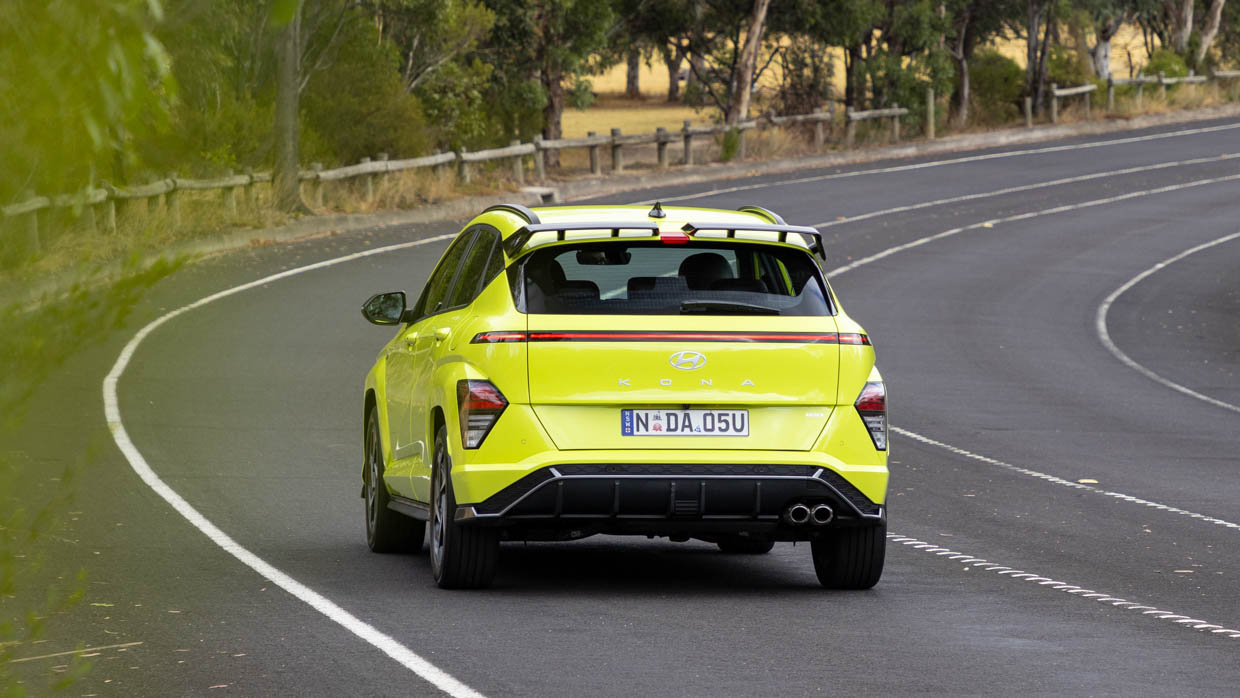
But even in sport, the Kona Hybrid is obviously engineered more for efficiency than it is for performance. The steering is sharp and the other controls, such as the brake pedal, feel great, however ultimately the Kona Hybrid has more grip and chassis than it has power to exploit it. It’s much more fun downhill than uphill.
You’ll find that your right foot is pinning the accelerator pedal to the carpet a lot. That’s especially true once you’ve depleted the small battery, thereby reducing the assistance of the electric motor, leaving you with effectively a 77kW/144Nm SUV. There’d be appliances in a cupboard in your kitchen somewhere with more power, probably.
While you might read “dual-clutch transmission” on the spec sheet, don’t get too excited. This is no Volkswagen DSG.
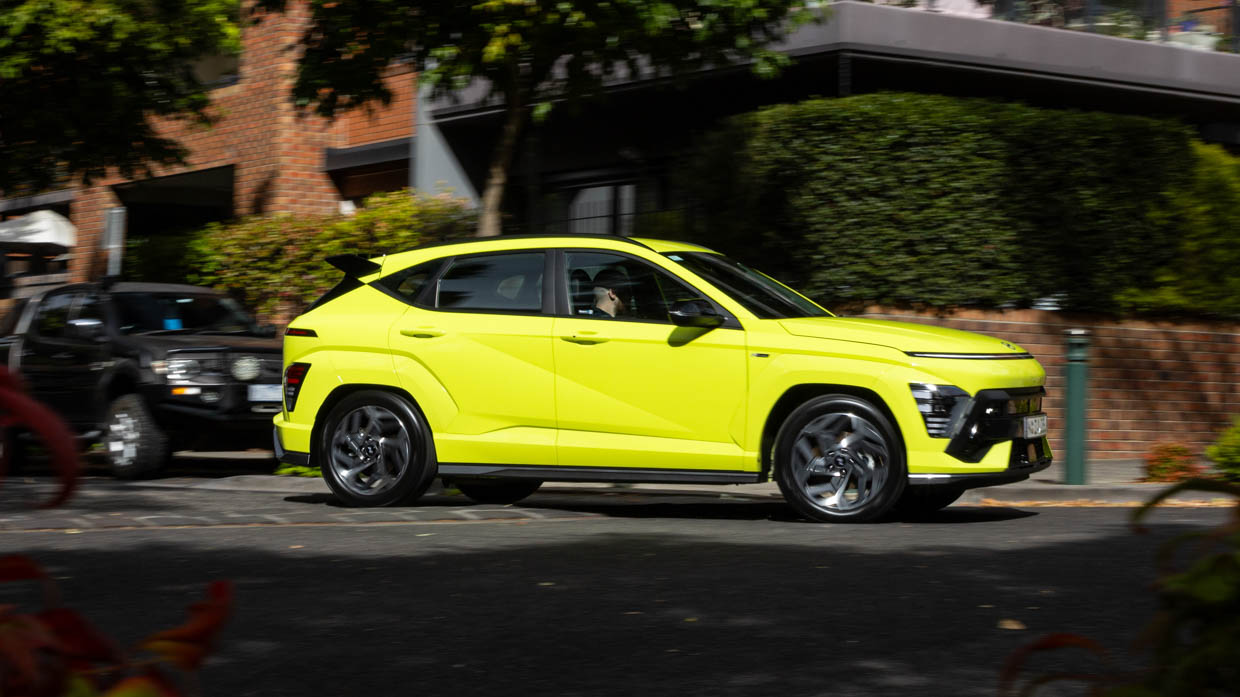
Even in sport mode, the steering wheel paddles don’t offer a dedicated manual mode, and the six-speed transmission generally is clearly bred for efficiency and economy rather than sharpness and response. It’s a forgettable gearbox, though this might’ve been Hyundai’s intention.
Hyundai says a benefit of the Kona Hybrid is the mouthful that is the Electric-Dynamic Torque Vectoring Control, which can use the electric motor to assist handling. However, we didn’t really notice much benefit or effect to be truthful.
You can tell a Kona Hybrid that’s been worked hard too, as the automatic cooling flaps on the front bumper will have opened. Normally they’re closed to assist aero as a function of clever EV tech used on a hybrid. But on the whole, this car is made to impress in litres-per-hundred rather than zero-to-one-hundred. Fair enough.
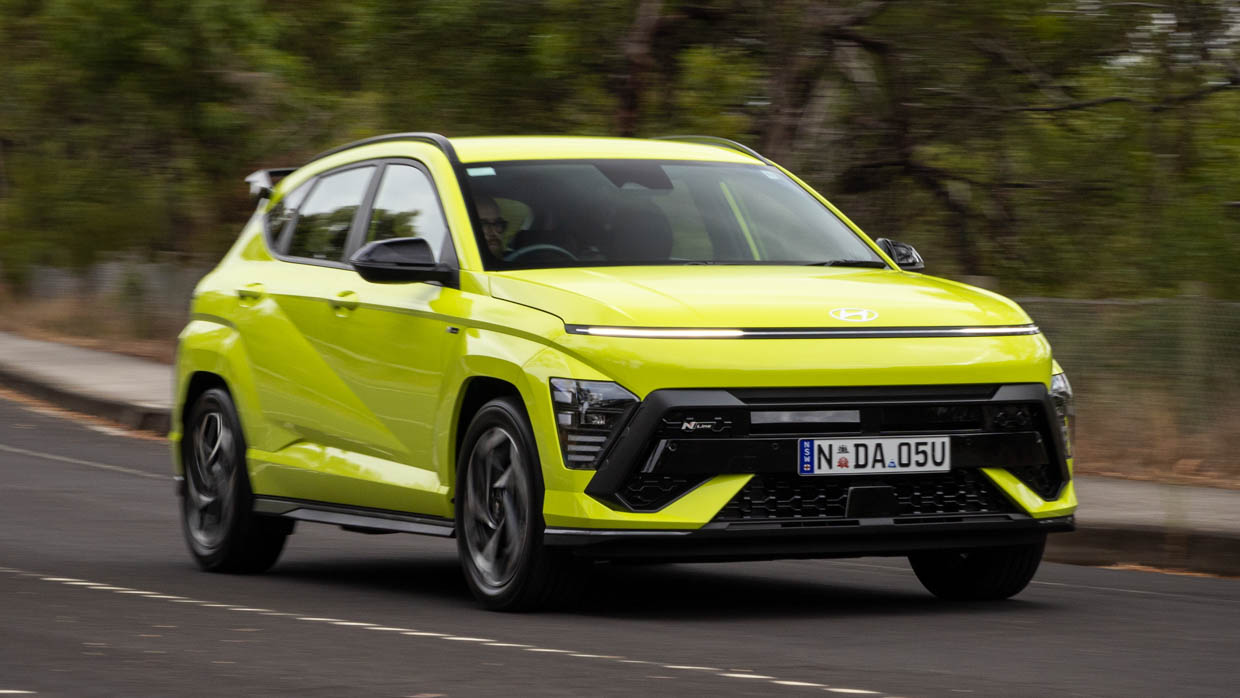
For those who do lots of highway kilometres, the Kona’s advanced driver assistance systems are very good and better than cars many times the price.
Set the adaptive cruise with lane centring and the Kona can drive itself down the motorway with minimal mental supervision. Once you’ve grown accustomed to a system like this, it can save a lot of energy on long trips.
Hyundai has done a terrific job with the latest generation Kona’s interior, which offers superb cabin space for the size of vehicle. It also has a funky design like the stylists made a mood board from the 1980s. We love it.
It’s easy to get comfortable – it feels like you’re sitting in a slightly raised car, rather than a tall SUV – although some extra steering wheel reach adjustment would be good.
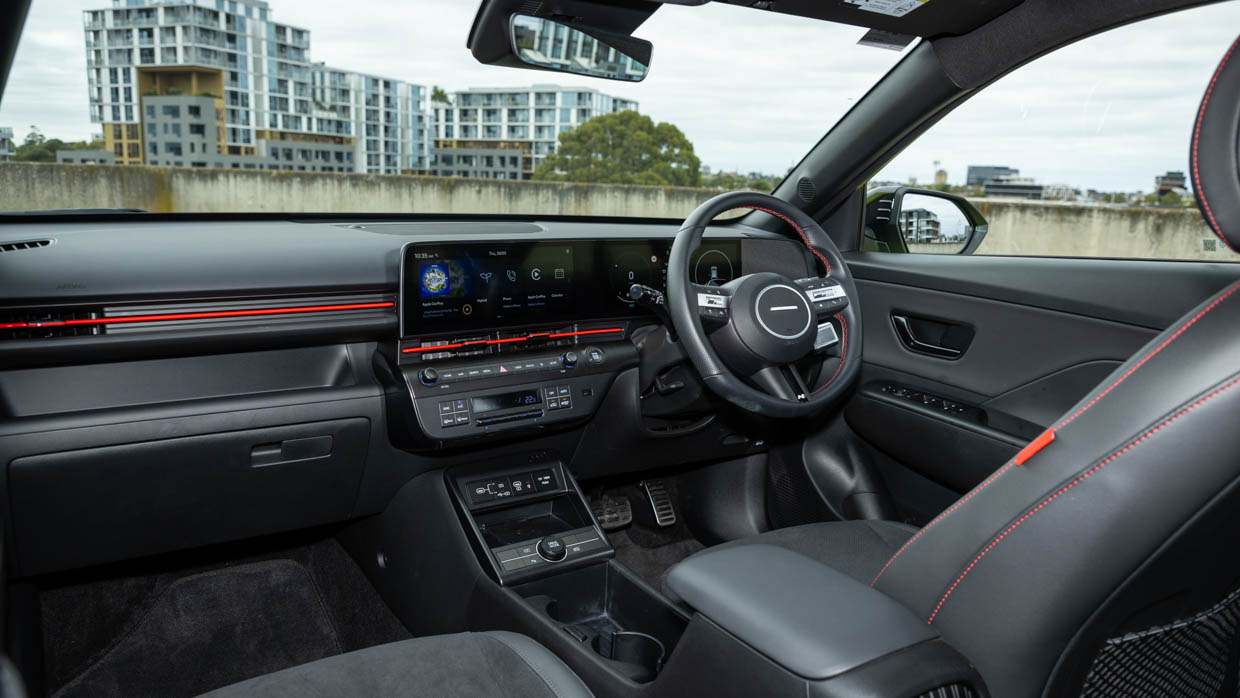
All Konas come with a large, 12.3-inch central infotainment touchscreen, and we like that it’s mounted a bit lower on the dash (it’s become popular to have interior screens mounted high and slightly impeding your forward vision). Apple CarPlay fills the screen generously.
Materials do err on the budget side, and our test car’s N Line pack spruced things up a tad with the leather-appointed, Alcantara seats.
Front-seat storage space is surely best in class. We love the exceedingly clever centre console design, one that’s wide and open, with tonnes of space for throwing things. Some smaller cars can have oddly small centre consoles but the Kona’s is so large it’s as if pinched from a much larger SUV. The 1.5-litre door drink bottle holders are also enormous.
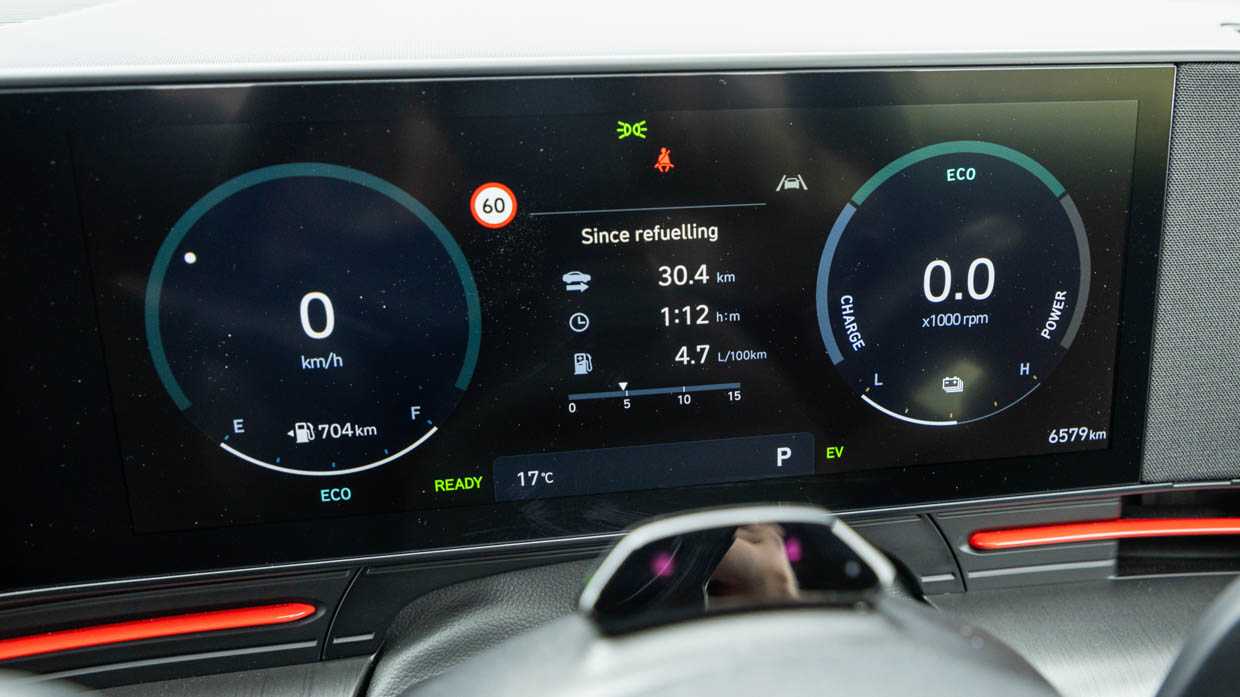
It’s fun to select from three different cluster designs, although it’s not possible to bring up a tachometer. Another tech gripe we have is the speed limit warning defaults to ‘on’ every time you start the car. “Just don’t exceed the speed limit,” some might say, however the system sometimes gets the speed limit wrong, so it’s chiming at you for no reason.
You can set-up the steering wheel shortcut button to take you straight to these settings (otherwise buried in the central touchscreen menu) but it’s an irritating compromise.
The packaging in the back of the Kona is very good. You can see where an additional 60mm of wheelbase has gone, as there’s plenty of space for adults. Credit to Hyundai, however, it’s not just knee-room; there’s also a tonne of foot-room. We often sit in the back of smaller SUVs and find our feet squashed under a front seat. Not here.
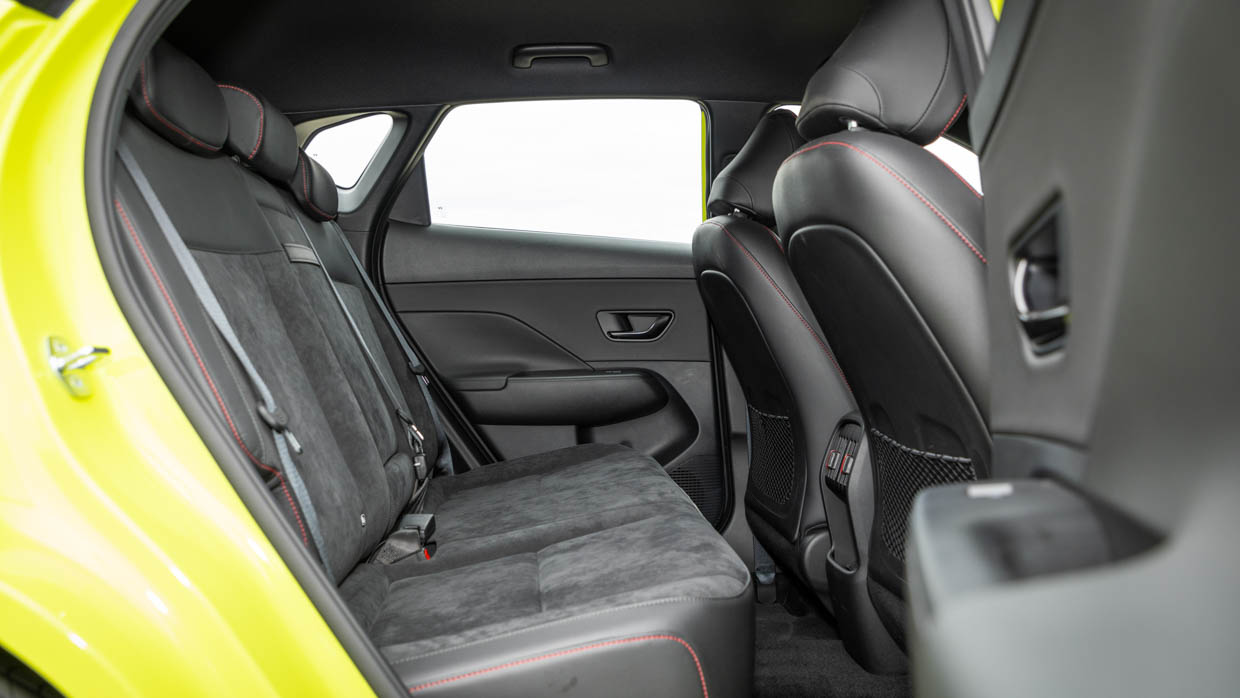
For those with offspring, there are two sets of Isofix points on the outboard rear seats, and three top-tether anchorages.
The masterclass in clever interior design continues into the back seat, with a little cubby hole at the back of the centre console for things like phones. There are two manually adjustable air-vents and two USB-C phone chargers, and a centre armrest (something that often gets axed on base models).
While the second row itself doesn’t slide forward and backwards – pretty standard for this class – the seats split 60/40 and the wide boot a sizeable 407 litres. There’s even a space-saver spare wheel. Many hybrids ditch a spare wheel to put the hybrid battery somewhere.

Our test car had an old-school manually opening and closing tailgate, which opens nice and wide. To get the electrically opening and closing set-up, you need the Premium.
Overall, however, this is a fantastic interior for this vehicle’s class.
The Kona is a very safe car, even if it’s only been scored four out of five stars by the local Australasian New Car Assessment Program (ANCAP). That was using data from its Euro NCAP (ANCAP didn’t crash-test the car itself).
It scored 80 and 84 percent respectively for adult and child occupant protection, which is above the five-star threshold. But its 64 percent for vulnerable road user protection and 62 percent for safety assist put it below the five-star threshold in both those categories.
To score five stars as of 2023, you must perform better than 70 percent (before 2023, the five-star minimum for these categories was 60 percent).

A score below 60 percent would have meant a three-star rating for the Kona – a close call for Hyundai, to be sure.
Despite the four-star safety rating, the Kona Hybrid is richly equipped with safety features such as:
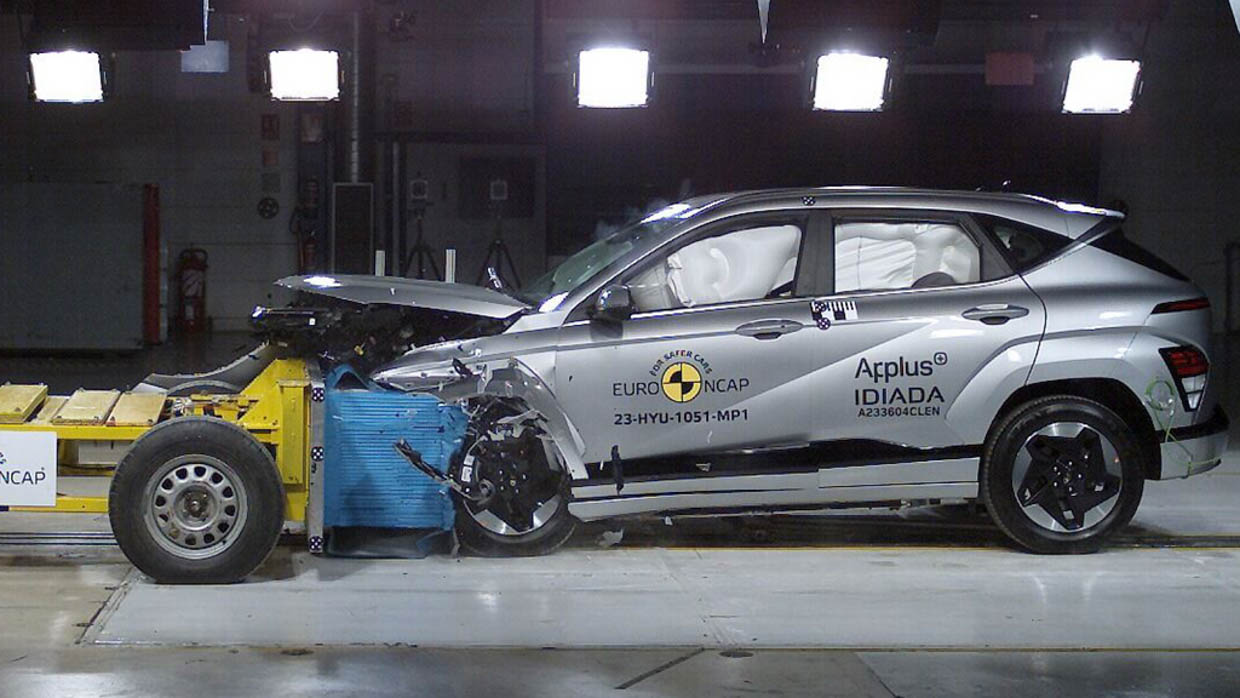
A few small black safety equipment marks against the base Kona Hybrid would be that reverse AEB is only available on the Premium.
The Kona’s active safety systems are very well calibrated although the lane-keeping, which defaults to ‘on’ with every drive, can nibble away at the steering wheel annoyingly on certain roads. This road-tester preferred to switch it off.
The driver attention monitor is well tuned and not annoying like some other new cars.
An impressive safety addition is the Acoustic Vehicle Alerting System (AVAS) – a forward external speaker than makes a low humming noise at low speeds, to warn pedestrians of the Kona Hybrid approaching in EV mode.

Hyundai doesn’t need to fit this to the car – as it’s not (yet) a regulatory requirement in Australia, unlike some places overseas – but credit that it did. Toyota, for all its hybrid sales, doesn’t include a system like this. Some brands like Lexus don’t even fit this system to their EVs in Australia.
The Kona Hybrid also beeps when reversing, a definite safety requirement as it normally reverses silently using only the electric motor.
Not all hybrids are created equal, but the Kona Hybrid is the real deal in terms of efficiency. At times we saw as low as 4.3L/100km, in mixed motorway conditions we saw as low as 3.8L/100km. That’s incredible.
Over the course of our 118.3km test, which included motorway, urban, country and some hardcore sporty driving, we recorded an average of 5.7L/100km. On an urban loop, we got 5.1L/100km, but we reckon 4.5L/100km is about right.
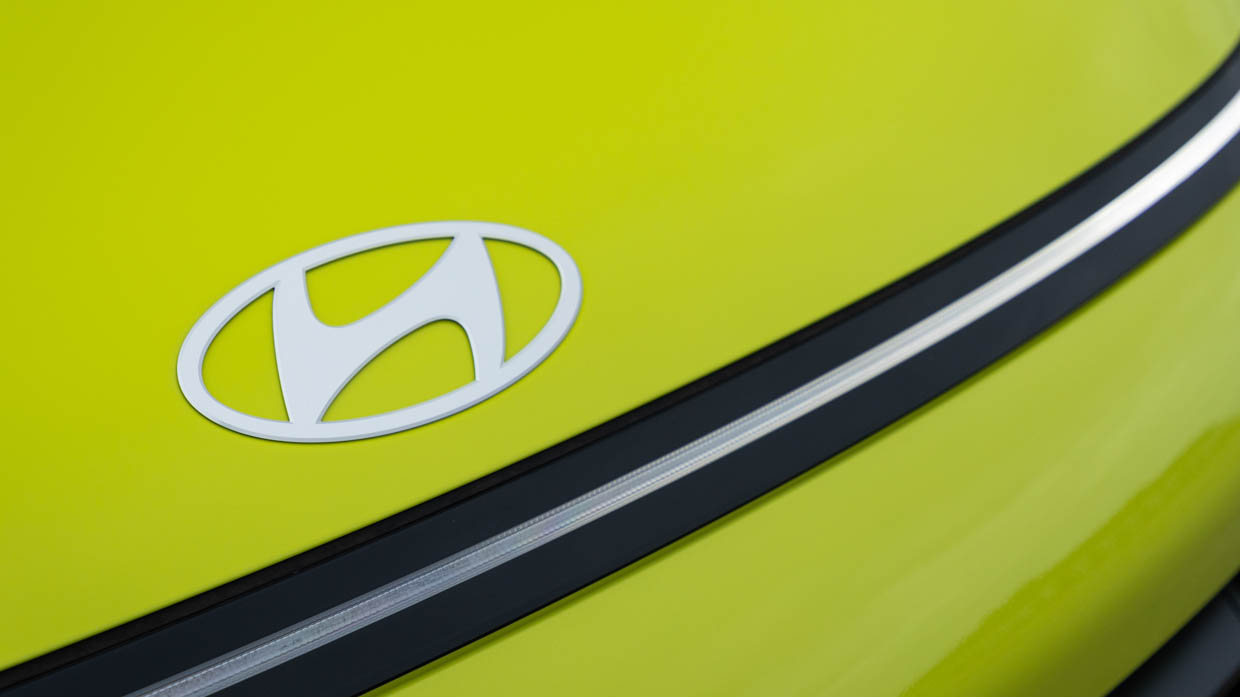
Going off the ADR81/02 figures, the base Kona 2.0 uses 6.6L/100km versus the Hybrid’s claimed 3.9L. On that basis, assuming a consistent 91RON price of $1.77/litre, it would take 84,000km to ‘pay off’ the $4000 premium. For most people, it will be a worthwhile upgrade.
While petrol versions get 47-litre tanks, the hybrid’s reduces to 38 litres. But that’s still enough to provide nearly 1000km of range.
Pleasingly, the Kona Hybrid takes the cheapest 91-octane unleaded fuel. Other hybrids we’ve tested lately, such as the Honda CR-V, require 95-octane premium unleaded, eating into any overall cost-of-ownership advantages.

One minor annoyance is the base Kona comes with a manually opening fuel filler flap. You have to lift a little lever down beside the driver’s seat; you can’t just press on the flap itself when outside the car. (We’re precious petals, yes.)
It’s a pity servicing isn’t cheaper. A five-year prepaid service plan is $2535 with intervals of 12 months or 15,000km, whichever comes first. A Toyota Corolla Cross will set you back something like $1250 over the same period. Any Honda is $995. Something to consider when crunching your numbers.
It’s just our guess, but heading into a more emissions-conscious future we reckon a hybrid is going to hold its value better than a non-hybrid over five years of ownership. Especially a hybrid of this calibre. More things to think about when considering the $4000 premium over the non-hybrid base model.
We love the new Hyundai Kona, and the Hybrid just adds more to love again in our books.
Real-world economy around 4.5L/100km is very impressive, and we love the electric motor assistance at lower engine speeds. The spacious, funkily-styled interior is also appreciated, as is the superb ADAS and the general way it drives.
It’s just a great little car and very worthy of the $4000 premium over the base 2.0-litre Kona.
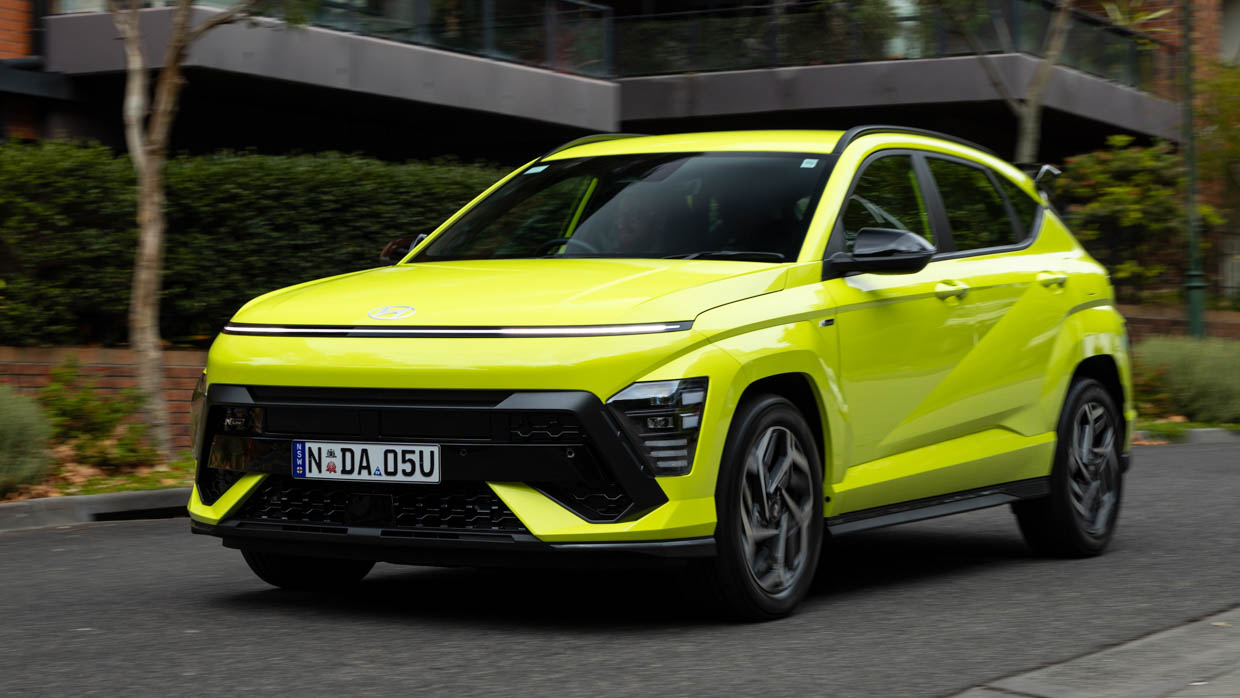
Our two cents is avoid the $4000 N Line package which, visually, hints at power and performance that plainly is not there. If it’s acceleration and speed you’re after, look elsewhere.
Spend $36,000 on the base model Kona Hybrid, or instead of $40,000 for the base Kona Hybrid N Line, spend $43,500 on the Premium instead, if you can afford it. Go for Mirage Green and enjoy many years of affordable and enjoyable motoring, with a fantastic car that does almost everything right.
Key specs (as tested)
About Chasing cars
Chasing Cars reviews are 100% independent.
Because we are powered by Budget Direct Insurance, we don’t receive advertising or sales revenue from car manufacturers.
We’re truly independent – giving you Australia’s best car reviews.
The estimate provided does not take into account your personal circumstances but is intended to give a general indication of the cost of insurance, in order to obtain a complete quote, please visit www.budgetdirect.com.au. Estimate includes 15%^ online discount.
^Conditions Apply
Budget Direct Insurance arranged by Auto & General Services Pty Ltd ACN 003 617 909(AGS) AFSL 241 411, for and on behalf of the insurer, Auto & General Insurance Company Limited(ABN 42 111 586 353, AFSL 285 571).Because we don’t know your financial needs, we can’t advise you if this insurance will suit you. You should consider your needs and the Product Disclosure Statement before making a decision to buy insurance. Terms and conditions apply.
Indicative quote based on assumptions including postcode , 40 year old male with no offences, licence suspensions or claims in the last 5 years, a NCD Rating 1 and no younger drivers listed. White car, driven up to 10,000kms a year, unfinanced, with no modifications, factory options and/or non-standard accessories, private use only and garaged at night.
^Online Discounts Terms & Conditions
1. Discounts apply to the premium paid for a new Budget Direct Gold Comprehensive Car Insurance, Third Party Property Only or Third Party Property, Fire & Theft Insurance policy initiated online on or after 29 March 2017. Discounts do not apply to optional Roadside Assistance.
2. Discounts do not apply to any renewal offer of insurance.
3. Discounts only apply to the insurance portion of the premium. Discounts are applied before government charges, taxes, levies and fees, including instalment processing fees (as applicable). The full extent of discounts may therefore be impacted.
4. We reserve the right to change the offer without notice.